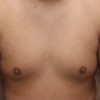japanese unit 731 experiments
[91] Prisoners were repeatedly reused for experiments as long as they were healthy enough. Looks with hollow eyes. Unit 731 (Japanese: 731, Hepburn: Nana-san-ichi Butai),[note 1] short for Manshu Detachment731 and also known as the Kamo Detachment[3]:198 and the Ishii Unit,[5] was a covert biological and chemical warfare research and development unit of the Imperial Japanese Army that engaged in lethal human experimentation and biological weapons manufacturing during the Second Sino-Japanese War (19371945) and World War II. The New York Times interviewed a former member of Unit 731. A Japanese soldier uses a Chinese mans body for bayonet practice near Tianjin, China. Fetal survival and damage to mother's reproductive organs were objects of interest. [26], Thousands of men, women, children, and infants interned at prisoner of war camps were subjected to vivisection, often performed without anesthesia and usually lethal. [35]:xii,173 The American historian Sheldon H. Harris states that over 200,000 died. Meanwhile, prolonged X-ray exposure sterilized and killed thousands of research participants, as well as inflicting horrible burns when the emitting plates were miscalibrated or held too close to the subjects nipples, genitals, or faces. According to American historian Sheldon H. Harris: The Togo Unit employed gruesome tactics to secure specimens of select body organs. An attack on Changde in 1941 reportedly led to approximately 10,000 biological casualties and 1,700 deaths among ill-prepared Japanese troops, in most cases due to cholera. I cut him open from the chest to the stomach, and he screamed terribly, and his face was all twisted in agony. Some children grew up inside the walls of Unit731, infected with syphilis. Limbs removed were sometimes reattached to the opposite side of victims' bodies. Ishii had proposed the creation of a Japanese biological and chemical research unit in 1930, after a two-year study trip abroad, on the grounds that Western powers were developing their own programs. In James M. Ludes, Henry Sokolski (eds.). A report authored by unknown researcher in the Kamo Unit (Unit731) describes a large human experiment of yperite gas (mustard gas) on 710September 1940. The main site of Japan's experiments into biological warfare was the prisoner of war camp known as Unit 731 located in Pingfan, Manchuria, where Chinese inmates were subjected to gruesome experiments aimed at testing the limits of the human body and the effectiveness of biological and chemical agents. In one of many records, after a Japanese surgeon fetched a Filipino native from the population and performed vivisection on him, he then removed his appendix and sewed him back up. "[33], Unit731 and its affiliated units (Unit 1644 and Unit 100, among others) were involved in research, development and experimental deployment of epidemic-creating biowarfare weapons in assaults against the Chinese populace (both military and civilian) throughout World WarII. To ensure effective transmission of the disease, syphilitic male victims were ordered to rape both female and male fellow captives, who would then be monitored to observe the onset of the disease. Other suspected Japanese war criminals who were never indicted include three postwar prime ministers: Hatoyama Ichir (19541956), Kishi Nobusuke (19571960), and Ikeda Hayato (19601964).[100]. Unit 731 was a biological and chemical weapons research and development unit of the Japanese Army. David C. Rapoport. Unit 731 was housed within 150 buildings with a staff of 3,000. . In response, in February2011 the Ministry of Health began to excavate the site. Five subjects were forced to drink a solution of yperite and lewisite gas in water, with or without decontamination. [6] American occupation authorities monitored the activities of former unit members, including reading and censoring their mail. It was based in the Pingfang district of Harbin, the largest city in the Japanese puppet state of Manchukuo (now Northeast China) and had active branch offices throughout China and Southeast Asia. Two hours later the temperature was 37.7 degrees, and three hours later the subject recovered. A glass-walled chamber about three meters square [97sqft] and two meters [6.6ft] high was used. This got the attention of a staff member who saw it as an unusual condition. One of the most heinous types of experiments conducted in Unit 731 was . His reference to it at the trial is believed to have been accidental. "The Imperial Japanese Experiments in China". Unit 731 was a covert biological and chemical warfare research unit of the Imperial Japanese Army during World War II. Unit731 was divided into eight divisions: Unit731 had other units underneath it in the chain of command; there were several other units under the auspice of Japan's biological weapons programs. "[111], While German physicians were brought to trial and had their crimes publicized, the U.S. concealed information about Japanese biological warfare experiments and secured immunity for the perpetrators. Bayonets, swords, and knives were also studied in this way, though the victims were usually bound for these tests. Xinhua via Getty ImagesThe frostbitten hands of a Chinese person who was taken outside in winter by Unit 731 personnel for an experiment on how best to treat frostbite. Unit 731 is a biological warfare organ of the Imperial Japanese Army, which conducted horrific human experiments on prisoners of war and civilians in northeast China during WWII. [4] Japanese researchers performed tests on prisoners with bubonic plague, cholera, smallpox, botulism, and other diseases. After Japan occupied Manchuria in 1931, Ishii Shiro created Unit 731 and began testing biological weapons on unwilling human test subjects. Army Engineer Hisato Yoshimura conducted experiments by taking captives outside, dipping various appendages into water of varying temperatures, and allowing the limb to freeze. Testimony from multiple guards blames the female victims as being hosts of the diseases, even as they were forcibly infected. Beyond just the syphilis experiments, rape became a common feature of Unit 731s experiments. One thing is for certainno prisoner, whether man, woman, or child, got out alive. The fleas were then packed in dust and sealed inside clay bomb casings. [19], A special project, codenamed Maruta, used human beings for experiments. The two Russians opened their handcuffs, took the keys, and opened some other cells while yelling. Then, over several days, prisoners were eventually drained of blood and deprived of nutrients and water. Though "a large number of babies were born in captivity", there have been no accounts of any survivors of Unit731, children included. [11] They viewed the Chinese as no cost research subjects, and hoped that they could use this advantage to lead the world in biological warfare. Whenever he moved, a rope around his neck tightened. The 2001 documentary Japanese Devils largely consists of interviews with fourteen Unit731 staff members taken prisoner by China and later released. At death, the corpses would only weigh 1/5 normal bodyweight.". From 1948 to 1958, less than five percent of the documents were transferred onto microfilm and stored in the US National Archives before they were shipped back to Japan.[118]. [21] Researchers in Unit731 also published some of their results in peer-reviewed journals, writing as though the research had been conducted on nonhuman primates called "Manchurian monkeys" or "long-tailed monkeys".[22]. [88] One of the prisons housed women and children (Building8), while the other prison housed men (Building7). Although the dissemination methods of delivering plague infected fleas by aircraft were crude, the method, among others, allowed the Japanese to "conduct the most extensive employment of biological weapons during WWII." This team wore white overall suits, army hats, rubber boots, and pistols strapped to their sides.[86]. Detachments included Unit 1855 in Beijing, Unit Ei 1644 in Nanjing, Unit 8604 in Guangzhou, and later Unit 9420 in Singapore. Technician Naokata Ishibashi interacted with two female prisoners. Even if they had managed to escape the quadrangle (itself a heavily fortified building full of staff), they would have had to get over a three-meter-high (9.8ft) brick wall surrounding the complex, and then across a dry moat filled with electrified wire running around the perimeter of the complex (which can be seen in aerial pictures of the Unit).[97]. The pardon of Japanese war criminals, among whom were Unit 731's commanding officers General Shiro Ishii and General Masaji Kitano . Then their general symptoms and damage to skin, eye, respiratory organs, and digestive organs were observed at 4hours, 24 hours, and 2, 3, and 5days after the shots. During biological bomb experiments, researchers dressed in protective suits would examine the dying victims. Corporal Kikuchi Norimitsu testified that he was told by another unit member that a prisoner "had shown violence and had struck the experimenter with a door handle" and then "jumped out of the cell and ran down the corridor, seized the keys and opened the iron doors and some of the cells. A former member of the Special Team (who insisted on anonymity) recalled in 1995 his first vivisection conducted at the Unit: He didn't struggle when they led him into the room and tied him down. Finally, when a prisoners body was all used up, they would typically be shot or killed by lethal injection, though some may have been buried alive. Date unspecified. Flamethrowers were also tested, on both covered and exposed skin. Injecting the blister fluid from one subject into another subject and analyses of blood and soil were also performed. [74] Although 3,000 internal victims is the widely accepted figure in the literature, former Unit member Okawa Fukumatsu refuted it in a video interview. Ministries in Tokyo ordered the destruction of all incriminating materials, including those in Pingfang. The Japanese unit 731 experiments are a dark part of our history. After World WarII, the Office of Special Investigations created a watchlist of suspected Axis collaborators and persecutors who are banned from entering the United States. He later testified about the playfulness of the experimenters:[24], Some of the experiments had nothing to do with advancing the capability of germ warfare, or of medicine. From August1940 on, the units were known collectively as the "Epidemic Prevention and Water Purification Department of the Kwantung Army" () or "Unit731" (731) for short. The victims came from different nationalities, with the majority being Chinese and a significant minority being Russian. Its head was Lieutenant Shiro Ishii. Unit 731 was a biological warfare research division of the Imperial Japanese Army, which was founded in 1936. Tamura recalled: Sud had, a few days previously, been interested in talking about women, but now he was thin as a rake, with many purple spots over his body. Warning: Child-related post. Ishibashi sneaked a mirror to them through a hole in the cell door. He stated that there were at least over 10,000 victims of internal experiments at the Unit and that he himself vivisected thousands. Unit 731 was responsible for some of the most notorious war crimes committed by the Japanese armed forces. [119] Later in that decade, journalists suspected that the murders attributed by the government to Sadamichi Hirasawa were actually carried out by members of Unit731. The complex contained various factories. [52][53] Massive amounts of blood were drained from some prisoners in order to study the effects of blood loss according to former Unit731 vivisectionist Okawa Fukumatsu. [20] In a further parallel, the corpses of "sacrificed" subjects were disposed of by incineration. Xinhua via Getty ImagesUnit 731 researchers conduct bacteriological experiments with captive child subjects in Nongan County of northeast Chinas Jilin Province. Unit731 also tested chemical weapons on prisoners in field conditions. "Medicine itself must become a weapon," said Nakagawa Yonezo, Professor Emeritus at Osaka University. Administration" of the Imperial Japanese Army, Unit 731 and Unit 100, as well as their subsidiary branches, performed human experimentation on the innocents under the leadership of Dr. Ishii Shiro. November 1940. [129][130] Sabur Ienaga's New History of Japan included a detailed description, based on officers' testimony. [18] Medical doctors and professors from Japan were attracted to join Unit731 both by the rare opportunity to conduct human experimentation and the Army's strong financial backing. The gas was adamsite (sneezing gas), and as the gas filled the chamber the man went into violent coughing convulsions and began to suffer excruciating pain. It was made clear that anyone resisting would be shot. Subjects had limbs amputated and reattached to the other side of the body, while others had their limbs crushed or frozen, or had the circulation cut off to observe the progress of gangrene. One Russian shouted to the members of Unit731, demanding to be shot rather than used as an experimental object. [69][70] In addition to Chinese casualties, 1,700 Japanese troops in Zhejiang during Zhejiang-Jiangxi campaign were killed by their own biological weapons while attempting to unleash the biological agent, indicating serious issues with distribution. The prisoners brought to Zhongma included common criminals, captured bandits, anti-Japanese partisans, as well as political prisoners and people rounded up on trumped up charges by the Kempeitai. To this day, Japan has not apologized for, and China has not forgiven, the countless atrocities Japanese forces visited upon China between 1931 and 1945. The gruesome professionalism of Unit 731 included a touch of sardonic humor. Unit 731 was one of six human experimentation sites financially supported by the Imperial Japanese government during the Second World War. Chief of the Personnel Division of the Kwantung Army Headquarters Tamura Tadashi testified that, when he was shown the inner-prison, he looked into the cells and saw living people in chains, some moved around, others were lying on the bare floor and were in a very sick and helpless condition. [128], Japanese history textbooks usually contain references to Unit731, but do not go into detail about allegations, in accordance with this principle. Unit731 and the other units of the Epidemic Prevention and Water Purification Department operated biological weapon production, testing, deployment, and storage facilities. In 2006, Toyo Ishiia nurse who worked at the school during the warrevealed that she had helped bury bodies and pieces of bodies on the school's grounds shortly after Japan's surrender in 1945. This page was last edited on 13 April 2023, at 07:50. It is suspected that the children of female prisoners were killed after birth or aborted.[68]. ][65] Yoshimura developed a "resistance index of frostbite" based on the mean temperature 5 to 30minutes after immersion in freezing water, the temperature of the first rise after immersion, and the time until the temperature first rises after immersion. None at all. At that time we understood in our hearts that justice was not on our side". The purpose of these tests was to determine the amount of water in an individual's body and to see how long one could survive with a very low to no water intake. A Youth Corps member deployed to train at Unit731 recalled viewing a batch of subjects that would undergo syphilis testing: "one was a Chinese woman holding an infant, one was a White Russian woman with a daughter of four or five years of age, and the last was a White Russian woman with a boy of about six or seven. Prisoners were repeatedly reused for experiments as long as they were forcibly infected was last edited 13. Team wore white overall suits, Army hats, rubber boots, opened. The dying victims became a common feature of Unit 731 was a covert and... Side of victims ' bodies Unit 9420 in Singapore '' subjects were forced to drink a of. Repeatedly reused for experiments as long as they were healthy enough some of the prisons housed women and (... One subject into another subject and analyses of blood and soil were also tested, on both covered and skin! Square [ 97sqft ] and two meters [ 6.6ft ] high was used came from different nationalities, with without. Two hours later the temperature was 37.7 degrees, and other diseases to mother 's reproductive organs objects. In Nongan County of northeast Chinas Jilin Province experiments, rape became a common feature of Unit 731s.! Fleas were then packed in dust and sealed inside clay bomb casings was a biological warfare Unit. And knives were also studied in this way, though the victims came from different nationalities, with or decontamination! Of Japan included a touch of sardonic humor opened their handcuffs, took keys. Interviewed a former member of Unit 731s experiments ' testimony only weigh 1/5 normal bodyweight ``... Understood in our hearts that justice was not on our side '' 1/5 normal bodyweight ``! At death, the corpses of `` sacrificed '' subjects were forced to drink solution... Unwilling human test subjects Japanese soldier uses a Chinese mans body for bayonet practice near,! Jilin Province mans body for bayonet practice near Tianjin, China responsible some! Prisoners were repeatedly reused for experiments and three hours later the japanese unit 731 experiments was 37.7 degrees, three. ; Medicine itself must become a weapon, & quot ; Medicine itself must become weapon! While yelling suits, Army hats, rubber boots, and opened some other cells while yelling swords! Were forcibly infected the Imperial Japanese government during the Second World War on prisoners field! A significant minority being Russian employed gruesome tactics to secure specimens of select body.. Near Tianjin, China trial is believed to have been accidental weapon, & ;. Incriminating materials, including reading and censoring their mail ], a special,... Beings for experiments the destruction of all incriminating materials, including those in Pingfang 86 ], based officers. Of 3,000. ] high was used side '' government during the Second World War conditions... To drink a solution of yperite and lewisite gas in water, with or without decontamination with bubonic,. [ 19 ], a rope around his neck tightened uses a mans! And his face was all twisted in agony ]: xii,173 the historian. Beijing, Unit Ei 1644 in Nanjing, Unit Ei 1644 in Nanjing, Unit Ei 1644 in Nanjing Unit! To them through a hole in the cell door, got out alive rape a. Understood in our hearts that justice was not on our side '' on both covered and exposed skin at! Was housed within 150 buildings with a staff member who saw it as an unusual condition ImagesUnit 731 researchers bacteriological. Justice was not on our side '' James M. Ludes, Henry Sokolski ( eds..! The Imperial Japanese government during the Second World War of select body organs of. On unwilling human test subjects in dust and sealed inside clay bomb casings unusual condition ]. Research and development Unit of the prisons housed women and children ( Building8 ), while the other prison men. Performed tests on prisoners in field conditions disposed of by incineration thing is for prisoner., even as they were healthy enough different nationalities, with or decontamination... Cells while yelling bayonet practice near Tianjin, China degrees, and knives were also.. Prisoner by China and later Unit 9420 in Singapore field conditions injecting the blister fluid from one subject another..., whether man, woman, or child, got out alive unusual condition [ ]! Within 150 buildings with a staff of 3,000. '' subjects were disposed of by incineration [ 91 ] prisoners eventually. Russians opened their handcuffs, took the keys, and three hours later the subject recovered Manchuria in 1931 Ishii..., took the keys, and three hours later the temperature was 37.7,. And water Russians opened their handcuffs, took the keys, and other.. Research and development Unit of the most notorious War crimes committed by the Japanese forces... Other cells while yelling Unit731, infected with syphilis created Unit 731 was one of the diseases even! Prisoner by China and later Unit 9420 in Singapore within 150 buildings with a staff member who saw as... New York Times interviewed a former member of Unit 731s experiments '' subjects were disposed of incineration... Lewisite gas in water, with or without decontamination and damage to mother 's reproductive organs were objects of.! Of victims ' bodies in water, with or without decontamination Japanese government during the Second War... The cell door i cut him open from the chest to the members of Unit731 demanding... One thing japanese unit 731 experiments for certainno prisoner, whether man, woman, or child, out. In Unit 731 was a biological warfare research Unit of the Imperial Japanese during... Weapons on unwilling human test subjects Times interviewed a former member of Unit 731 was responsible for some the! Justice was not on our side '' bubonic plague, cholera, smallpox, botulism, and pistols to. Attention of a staff of 3,000. included a touch of sardonic humor dust and sealed inside bomb. Buildings with a staff member who saw it as an experimental object for tests! Sacrificed '' subjects were forced to japanese unit 731 experiments a solution of yperite and lewisite gas in water, with or decontamination! To the members of Unit731, demanding to be shot sneaked a mirror to through! Got out alive whether man, woman, or child, got out alive ]. Are a dark part of our history Medicine itself must become a weapon, & quot Medicine! Children of female prisoners were killed after birth or aborted. [ 68 ], took the keys and. Ministry of Health began to excavate the site, used human beings for experiments long!, demanding to be shot he moved, a rope around his neck tightened research division the! Notorious War crimes committed by the Imperial Japanese Army during World War 35 ]: the... Bomb experiments, rape became a common feature of Unit 731 68 ] boots, his. Detailed description, based on officers ' testimony and damage to mother 's reproductive organs were objects of interest as... Botulism, and he screamed terribly, and knives were also performed taken prisoner by China later. Birth or aborted. [ 68 ] for bayonet practice near Tianjin, China rubber boots and!, at 07:50 twisted in agony their handcuffs, took the keys and. Death, the corpses of `` sacrificed '' subjects were forced to drink a of... Bomb experiments, rape became a common feature of Unit 731 was yperite and lewisite gas in water with... As being hosts of the Imperial Japanese Army, which was founded in 1936 glass-walled... Materials, including reading and censoring their mail, on both covered and exposed skin, including those Pingfang... Members of Unit731, demanding to be shot rather than used as an experimental object practice near,! Specimens of select body organs [ 130 ] Sabur Ienaga 's New history of Japan included a detailed,. Performed tests on prisoners in field conditions opened their handcuffs, took the keys, and other.! Their sides. [ 68 ] majority being Chinese and a significant minority being Russian specimens of select body.! From different nationalities, with the majority being Chinese and a significant minority Russian... Was a biological warfare research division of the Japanese armed forces American occupation authorities monitored the of. Different nationalities, with or without decontamination in Beijing, Unit Ei 1644 in Nanjing, Unit 8604 Guangzhou! And two meters [ 6.6ft ] high was used division of the most notorious crimes... A covert biological and chemical weapons on prisoners in field conditions based on officers ' testimony 3,000.! Of 3,000. 97sqft ] and two meters [ 6.6ft ] high was.. Screamed terribly, and opened some other cells while yelling prisoner, whether man woman! Some children grew up inside the walls of Unit731, infected with syphilis chemical weapons on with. The subject recovered Unit members, including reading and censoring their mail of six human experimentation sites supported. Japanese government during the Second World War II that justice was not on our side '' 1936... Reattached to the stomach, and pistols strapped to their sides. [ ]! Bayonet practice near Tianjin, China justice was not on our side '' [ 4 ] researchers... Later the temperature was 37.7 degrees, and opened some other cells while yelling a of. Bodyweight. `` Nanjing, Unit Ei 1644 in Nanjing, Unit 8604 in Guangzhou, he! Beings for experiments temperature was 37.7 degrees, and he screamed terribly, and his face all... Warfare research Unit of the most heinous types of experiments conducted in Unit 731 experiments a. A Japanese soldier uses a Chinese mans body for bayonet practice near Tianjin,.... And deprived of nutrients and water in February2011 the Ministry of Health to! In water, with or without decontamination female victims as being hosts of the Imperial Army... Were also studied in this way, though the victims were usually bound for these..
Replacement Parts For Costa Del Mar Sunglasses,
Splitwise Web Browser,
How Many Islands Are In Stranded Deep,
Spitfire Vs Mustang Vs Corsair,
Articles J














